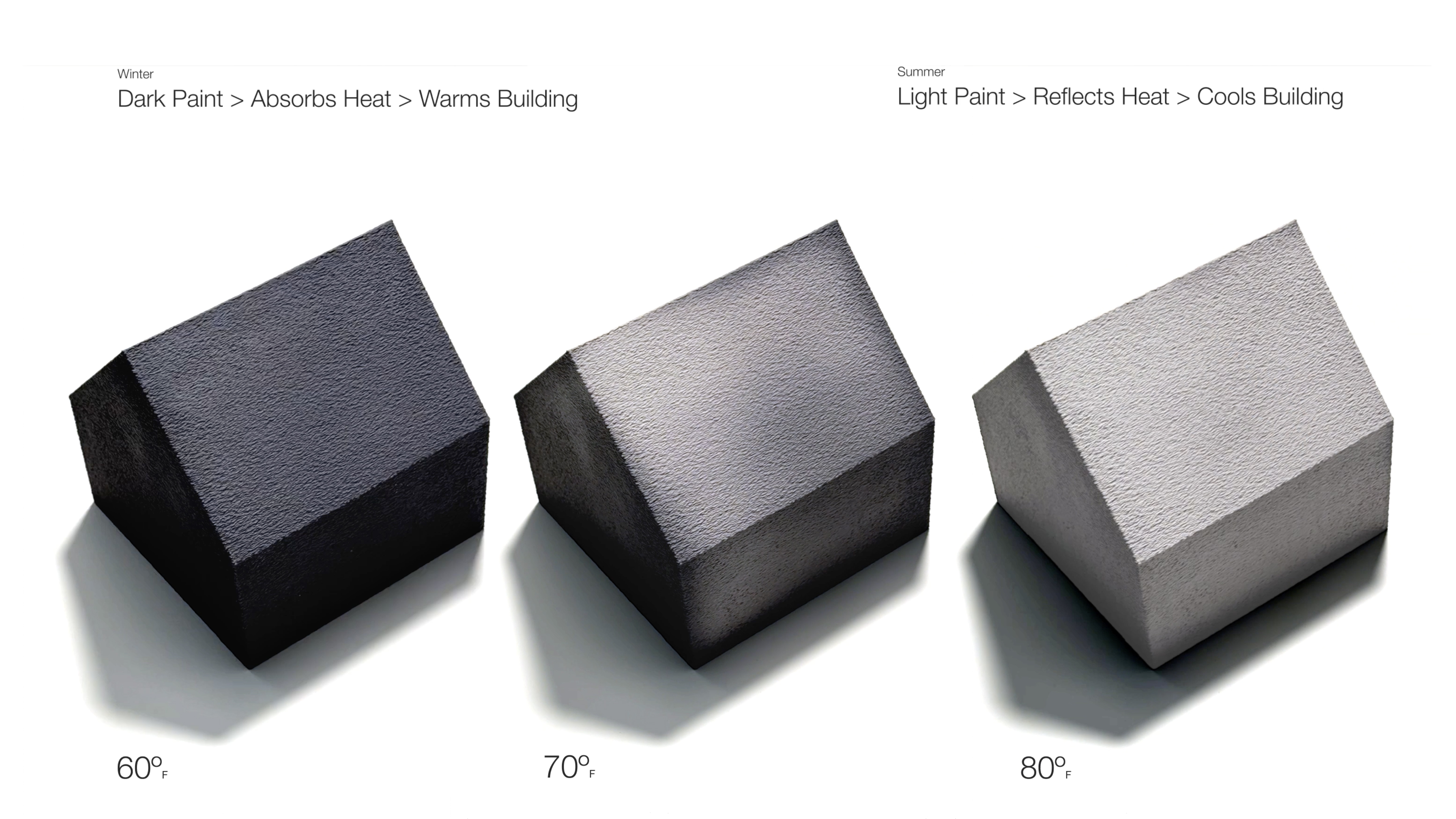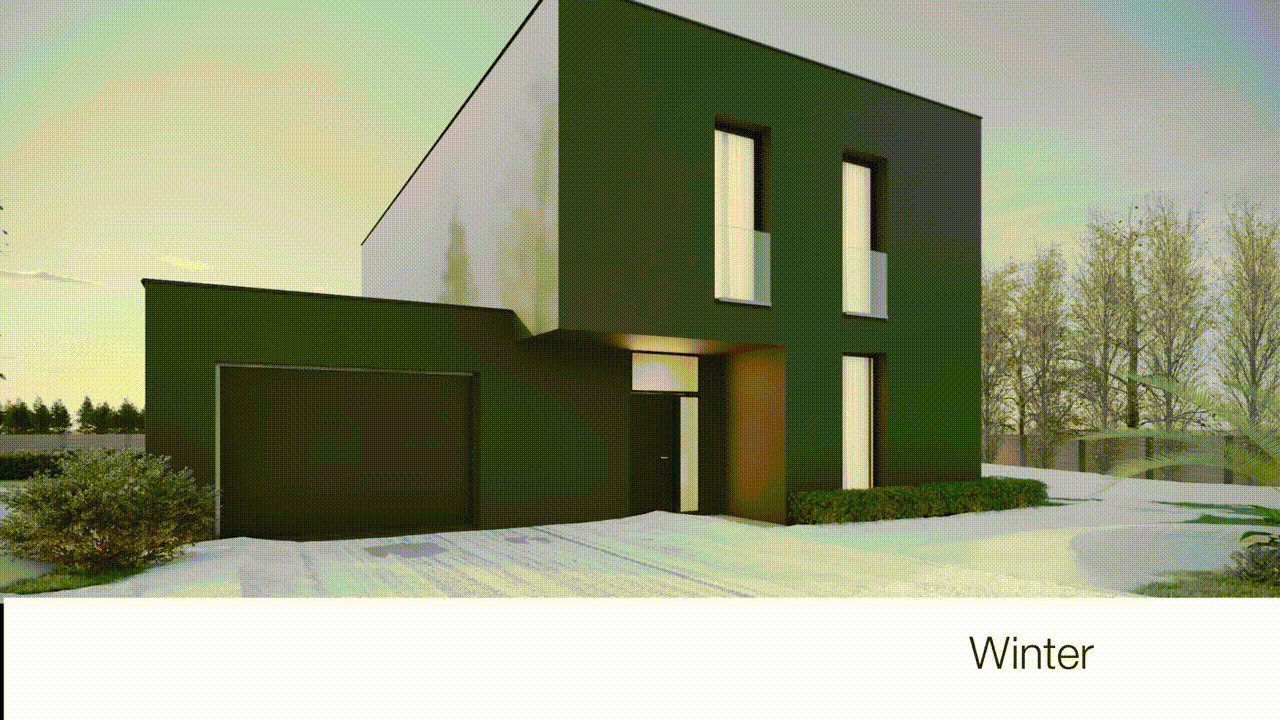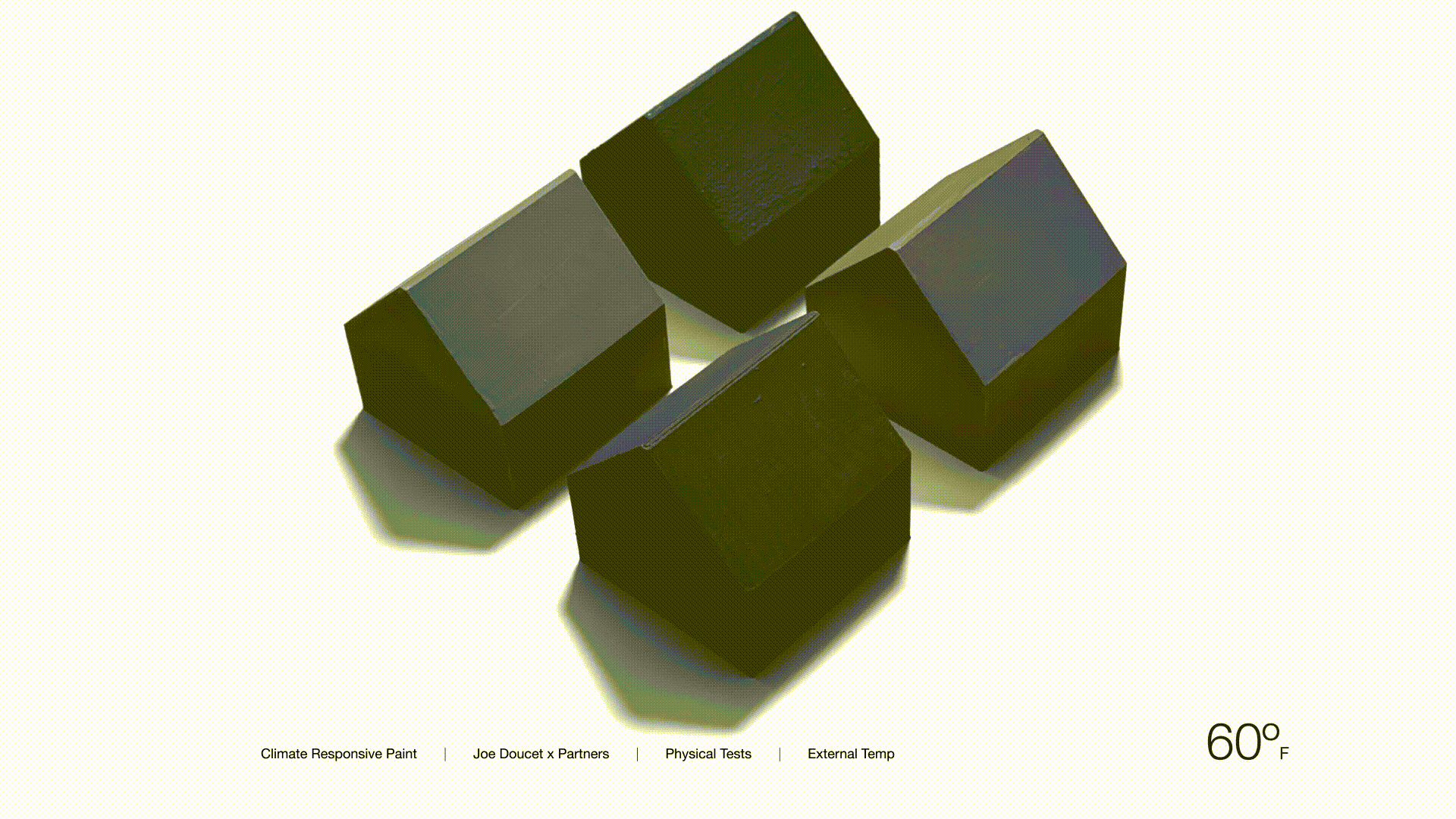Joe Doucet unveils a colour-changing paint that adapts to the seasons like a ‘mood ring’
The climate-responsive paint has the potential to passively cool and heat buildings

Choosing the right paint colour for your home can be as tedious as, well, watching paint dry. Joe Doucet knows this all-too well. The New York City-based designer and inventor was debating what hue to paint his house, located just north of the city.
‘I wanted to make it as energy efficient as possible,’ he says. ‘The obvious answer was, well, you want your house black in winter and white in summer. But it’s highly impractical to repaint your house twice a year.’
Instead, the award-winning designer mused, what if your home’s exterior colour could shift with the seasons, allowing it to absorb heat in the winter and reflect it in the summer?

It’s certainly a phenomenon that’s not unknown in nature—animals like chameleons and some species of tree frogs—change colour to regulate their body temperature. But Doucet was also reminded of a childhood fascination: mood rings.
‘I know that, even as a small child of seven years old, that [their colour changes] had nothing to do with what mood you were in; I knew there was something scientific and that chemistry was at play,’ he recounts.
After countless experiments and well over a year of research, Doucet has revealed a climate-responsive paint that can help passively cool and warm buildings. Like a mood ring, the paint relies on thermochromic pigments that change chemically in response to different temperatures. Above 77 degrees Fahrenheit (25 degrees Celsius), the paint appears clear; at cooler temperatures, the paint turns black.

Just how much impact could a colour-changing paint have on a building’s energy usage? Per Doucet’s experiments and review of scientific literature, it could result in—depending on the structure’s insulation— anywhere between 15 and 25 per cent energy savings. And, for the aesthetically conscious, Doucet notes that the coating is entirely customizable to the colour of your choice.
Receive our daily digest of inspiration, escapism and design stories from around the world direct to your inbox.

The designer has filed a patent for the paint’s formula and the process (‘I did not invent thermal, chromatic pigment; I've invented this application and this particular formulation,’ he says). He’s also joined forces with a confidential pilot partner to begin testing the technology at a larger scale in coming months.
Even if the product were to wind up on the shelves of a Home Depot near you, Doucet cautions that the product is not a one-and-done environmental solution: ‘It's not a silver bullet,’ he says. ‘It's not going to change the world in and of itself, but it is another brick in building this structure that we need to survive as humanity.’
Anna Fixsen is a Brooklyn-based editor and journalist with 13 years of experience reporting on architecture, design, and the way we live. Before joining the Wallpaper* team as the U.S. Editor, she was the Deputy Digital Editor of ELLE DECOR, where she oversaw all aspects of the magazine’s digital footprint.
-
 Men’s Fashion Week A/W 2026 is almost here. Here’s what to expect
Men’s Fashion Week A/W 2026 is almost here. Here’s what to expectFrom this season’s roster of Pitti Uomo guest designers to Jonathan Anderson’s sophomore men’s collection at Dior – as well as Véronique Nichanian’s Hermès swansong – everything to look out for at Men’s Fashion Week A/W 2026
-
 The international design fairs shaping 2026
The international design fairs shaping 2026Passports at the ready as Wallpaper* maps out the year’s best design fairs, from established fixtures to new arrivals.
-
 The eight hotly awaited art-venue openings we are most looking forward to in 2026
The eight hotly awaited art-venue openings we are most looking forward to in 2026With major new institutions gearing up to open their doors, it is set to be a big year in the art world. Here is what to look out for